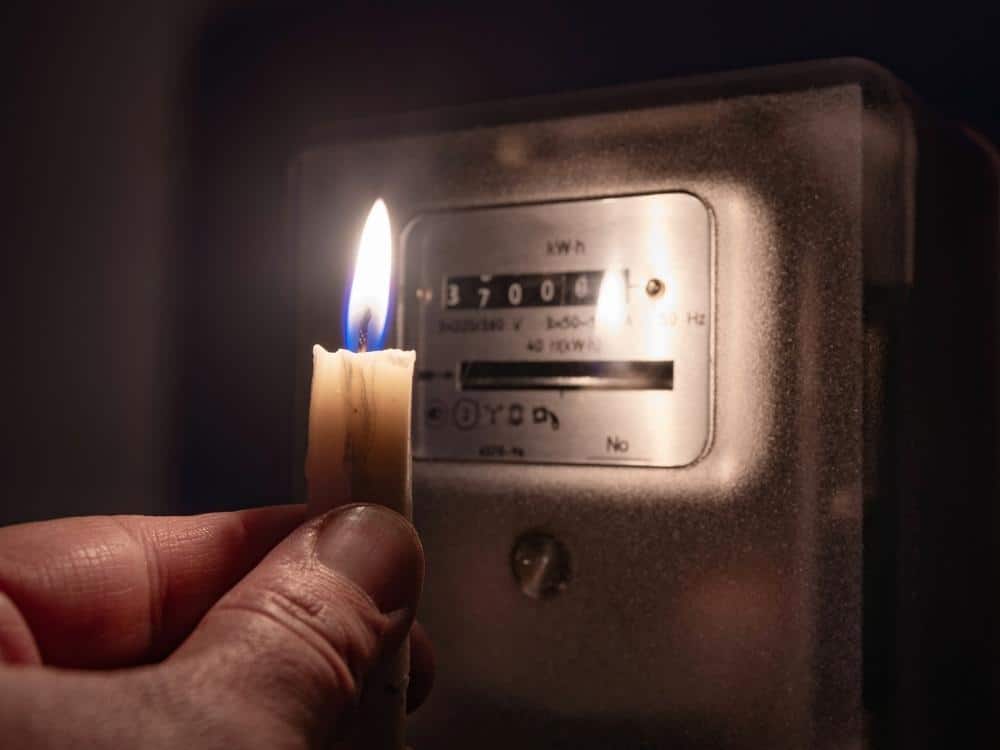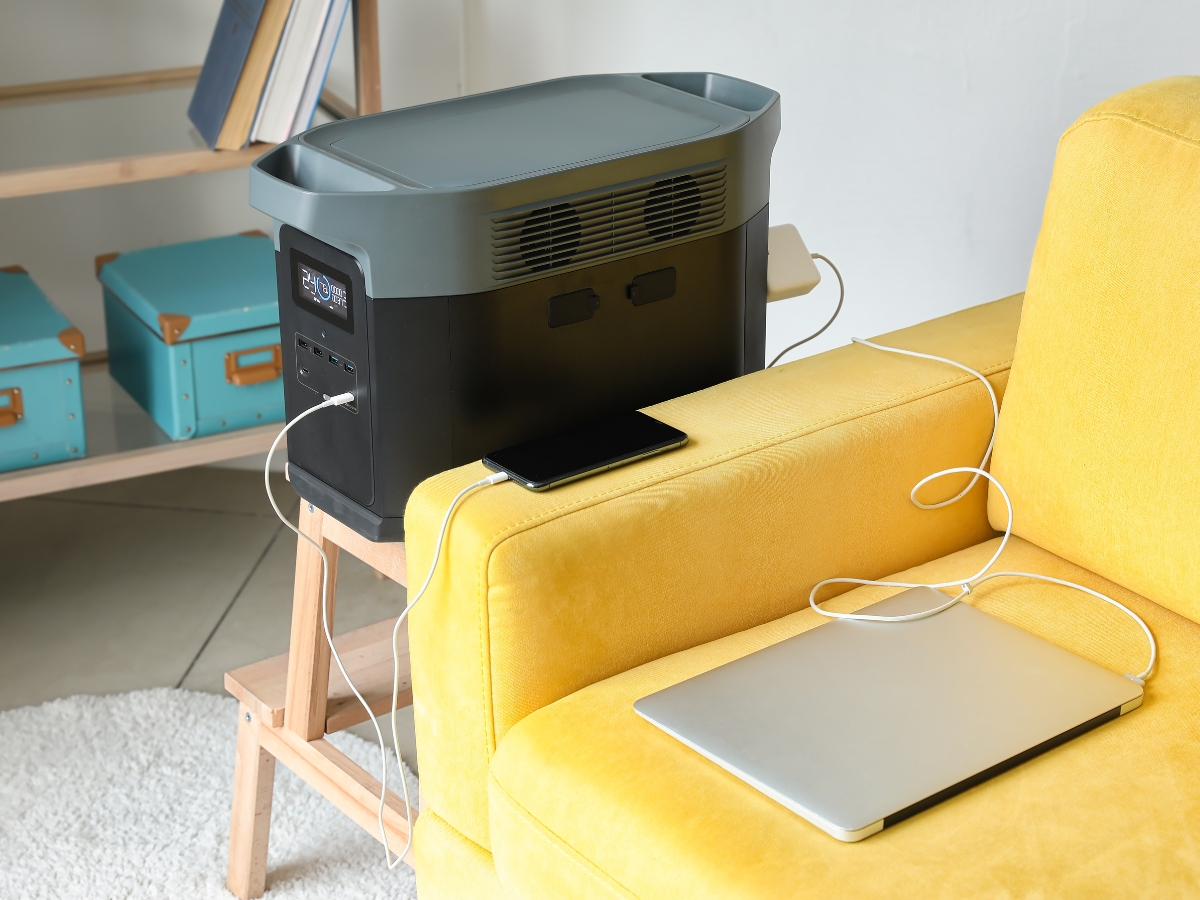Everyone wants to know when their electricity will be restored in a power outage. Still, it is vital to understand how utility providers prioritize repairs. Some power outages can be automatically restored, whereas others can take months to fully restore power because of a lack of resources.
Since 2013, the Energy Information Administration (EIA) has collected data on power outages. It has been estimated that an American will experience two hours of power loss each year. Excluding significant disruptions caused by earthquakes, hurricanes, storms, and other disasters.
When you consider how long it will take for power outages to be repaired and the power restored, we need to take the following into account:
- Did humans or nature cause the outage
- What is the extent of the damage?
- Is all the required parts and resources available for repair?
- Is it safe to restore the power?
- Being prepared in the case of an extended power outage
Was the power outage caused by a natural disaster or human actions? Determining the cause of the power outage is the first clue to estimating how long the power will be out. Not all power outages are equal to restoration times, so come explore the different causes and their estimations.

Time To Fix Power Outages Caused By Humans
Humans cause accidents resulting in various power outages in their regular comings and goings. Some of these outages are outside the home, whereas others are caused inside the house. Our desire for more power-hungry gadgets and devices causes power shortages and sometimes overload outages.
Automobile accidents involving a utility pole are pretty standard, which is a constant concern for all involved. Sometimes you get a contractor to clean up the garden. They accidentally sever a power cable or let a tree fall on the power line.
Inside the home, it can be something as simple as connecting too many things to a power receptacle and the circuit breaker “trip.” We have seen many homeowners drill a hole into an electrical cable inside the wall by accident or cut the lawnmower cord. These are easy fixes since you can unplug the device and reset the circuit breaker to let the electricity flow again.
In the worst-case scenario, many human activities could take anywhere from a few minutes to a few days to repair. Electricity is hazardous and should only be fixed by a professional or qualified person.
Report downed utility poles or blown transformers immediately with your service provider.
Time Repairing Downed Power Lines
Downed power lines are significant time-sensitive problems many utility providers face. You will sometimes see a crew come out to inspect the site and leave again without fixing the lines. A thorough damage assessment must be done, and the affected cables and transformers must be marked.
Different power suppliers may also use the same distribution poles. Each one is responsible for fixing their own lines and transformers. It takes about 3-4 hours to replace a utility pole when all the resources are on-site.
So, you can imagine it can take a long time after a storm or natural disaster to replace every broken electrical pole. Replacing blown transformers, broken utility poles, and restringing power cables are some of the tasks utility providers do after a storm.
An Outage When A Transformer Blows
The time it takes to replace a transformer once it “blows” depends on whether the new transformer is at hand. It might take the technician more than a few hours to replace the transformer.
The most common reasons for transformer failure are lightning strikes, overloading, wear, corrosion, voltage spikes, and moisture. Mineral oil is used to keep transformers cool. Still, when a wire is overcharged, it might produce heat and sparks, causing pressure buildup inside the transformer.
This enormous overpressure could eventually cause the transformer to rupture, resulting in a loud boom, flash, and possibly a fireball with a giant plume of smoke visible from a distance.
If you see or hear a transformer blow report it as soon as possible.
How Long Does It Take To Fix Outages Caused By Nature?
Utility providers will agree that nature is the leading cause of power outages every season. In the dry season, nature can cause wildfires disrupting the power supply to many customers. There are floods, hurricanes, tornadoes, and all variations of storms in the wet season.
Wildfires and severe stormy weather created the need for a PSPS (Public Safety Power Shutoffs) outage alerts system. Intentional power outages to prevent damage to the grid system or communities necessitates PSPS.
If you are constantly in an affected area, be sure to sign-up for an alert service that will inform you of how long the outage will be.
How Long Does It Take To Restore Power After An Earthquake?
Earthquakes are devastating natural disasters that severely affect the power grid. The shaking causes damage to equipment like transformers and brittle insulating items.
Power outages caused by earthquakes can last anything from hours to days and even months, depending on the damage and parts availability.
Restoring Power After A Tornado
The National Severe Storms Laboratory (NOAA) indicates more than 1200 tornadoes hit the United States every year. A trail of destruction from a tornado can take weeks to months to clean up, and repairing the electrical grid in affected areas is not quick.
Utility companies will try to restore power as fast as possible, so no accurate timeline can be given for power restoration after a tornado.
Repairing Outages Caused By Animals
Utility suppliers say they can have up to 15000 animal-related power outages in a year. Squirrels are such a big problem that the industry gave them their own acronym, POCBS (Power outages caused by squirrels). Rodents, snakes, raccoons, insects, cats, and birds also cause daily damage to the power grid, leaving us in the dark.
A good share of time and money is spent every month preventing and repairing the damage done by animals. Sometimes it is quick to restore power since the animal just caused a short when their body created a pathway between the live and neutral cables.
Rodents and reptiles make nests in substations that are warm, close to transformers, or birds like to nest on utility poles.
These nests need to be cleared out from all animals and their feces before power can be restored. Utility providers are constantly inventing preventative measures to curb animal-related outages.
One of the scariest animal power outages was when jellyfish clogged a nuclear power plant’s intake pipes in Scotland.
Automatic Restoration Devices
Years back, when a lightning strike hit a utility pole, the power was out for a very long time. Today the technology has developed to the point where a system can restore itself up to 3 times. Automatic restoration systems and breakers can reset themselves after a few seconds to resume power.
Have you ever experienced the power going off for a few seconds and then suddenly coming back on? This is an automatic restoration system doing its thing. It can do this up to three times, and if the fault persists, it will not reset, and a technician will investigate and repair the defect.
Intelligent software systems are integrated with today’s grid technology to help reconfigure and reset the grid after a power outage. The electricity supply needs to be restored in phases to allow the grid to ramp up; otherwise, there might be crashes and surges.
If the faults are severe and the system cannot rectify itself, a technician will repair the problem.
How Utility Providers Prioritize Repairs
First, your electric service provider’s staff will work around the clock until all service is fully restored. The principal focus is always the safety of the general public and employees. The following steps are followed and included in the service restoration sequence:
- Technicians do an overall system inspection and focus on repairing main lines and substations
- Technical crews must also clear dangers like shattered or leaning utility poles, uprooted trees on power lines, and severed wires
- Crews focus on restoring power to critical community safety, health, and welfare services such as hospitals, police stations, fire stations, communications, water, transportation, and other vital public services
- Repair priorities are determined by which electrical facilities will restore service to the most significant number of consumers in the quickest amount of time
- Once the primary circuits have been restored, personnel will switch their attention to system fixes that affect fewer consumers
- Crews must repair damaged substations and main electric cables and wires that deliver power to streets before home services can be restored
- Following that, any downed or broken wires between utility poles and individual homes are fixed
Preparing For An Outage In Advance
Many power outages caused by natural disasters such as earthquakes don’t get warning alerts out in time. Sometimes only seconds pass before you find yourself in the dark. Knowing where your emergency supplies are stored can make all the difference in a disaster situation.
When you receive a warning alert that a storm is coming, it is advised that you gather your readiness kit.
Other disasters, such as hurricanes, have up to 48 hours of watch alerts before the warning alerts start. Being prepared is constantly better than being caught off guard and without electricity.
What Supplies Do You Need In Your Readiness Kit?
Ensure you have an emergency kit and other supplies in a convenient location. Prepare a small document dotting down guidelines to follow, such as the location of the circuit breaker or fuse box and how to reset it. Create an emergency plan for your family and home, and practice opening an electric garage door or gate without electricity.
Unplug all electronics like your TVs, computers, and other devices to prevent damage in the case of a power surge when the power is restored. Having a generator or solar equipment at hand for keeping the refrigerators and freezers running is also a good idea. Containers such as duffel bags or plastic bins are ideally suited as readiness kits.
A readiness kit is not a one-off idea, and then you forget about it. You need to maintain and restock it every season to ensure it is still ready for an emergency situation.
Here is a list of items to have in your emergency readiness kit:
- Freshwater (one gallon per person per day, enough for several days for drinking and hygiene)
- Personal hygiene products and feminine supplies
- Non-Perishable Food (at least a three-day supply)
- A battery-operated or hand-cranked radio (NOAA Weather Radio with tone alert)
- Flashlights
- Additional batteries
- Solar chargers and backup batteries for phones
- First-aid supplies
- Medication on prescription, since refilling your prescription or locating an open pharmacy might be difficult
- Nonprescription drugs such as pain relievers, anti-diarrhea pills, antacids, and laxatives
- Contact lens solution and prescription eyeglasses
- Mask to help filter contaminated air, and other pathogens
- A whistle to blow when signaling for help
- Duct tape for plastic sheeting (to make a shelter if needed)
- Garbage bags, moist towelettes (for personal hygiene)
- Tools to turn off utilities
- A manual Can opener
- Maps of the area (street signs might not be there anymore)
- Infant care
- Formula
- Bottles
- Diapers
- Wipes
- Diaper rash cream
- Extra pet food and water
- Essential family documents should be kept online or in a waterproof portable container
- Insurance policy copies
- Identity documents
- Bank account data
- Traveler’s checks or cash since atm’s will probably be out
- Each individual should have a sleeping bag or a blanket
- Change of clothing appropriate for your climate, as well as sturdy shoes
- Extinguisher for fires
- Extra gas for cars and generators
- Matches and other fire-starting items are kept in a watertight container
- A Mess kit with utensils
- Pencil and paper
- Children’s books, games, puzzles, and other activities to keep kids occupied
Best Readiness Kit Storage Places
Prepare supplies for your house, work, and cars because you never know where you will be in an emergency. Keep this readiness kit in a dedicated area of your home and have it ready if you need to leave fast. Train all family members to be aware of the location of the kit.
When you get stuck at work, be prepared to take refuge at your workplace for at least 24 hours. Food, drink, and other basics such as medications, warm clothes, and good walking shoes should be kept in a bag just in case.
Your vehicle is a great place to store an emergency supply bag if you become stranded and cannot make it home.
References




